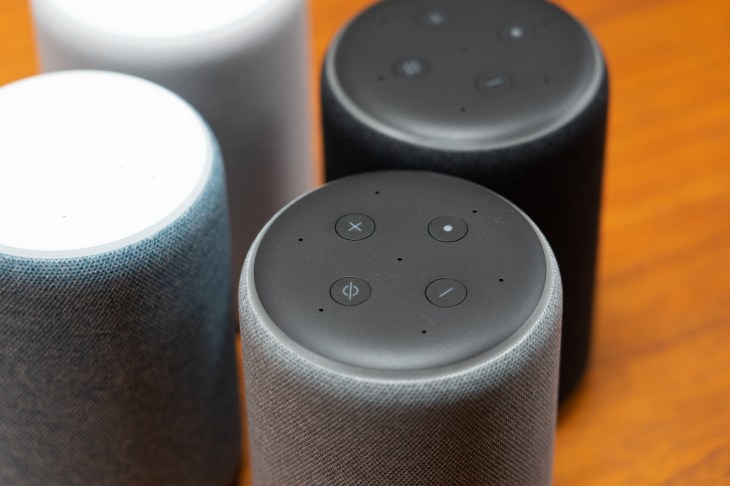
Alexa is gradually becoming a fully automated virtual assistant thanks to Amazon. The goal of Amazon’s several improvements to the Alexa user interface is to make the virtual assistant simpler to use. The most noticeable change is how Alexa now manages Routines; previously, users had to manually build their own automation, but now developers may create them and propose them to other users. Amazon is attempting to ensure that the most crucial instructions, like “Stop!” operate regardless of what wake word you’re using. Alexa is also beginning to coexist with other manufacturers’ assistants. A nice improvement if you ask me.
These announcements were delivered by Amazon during their Alexa Live developer conference 2022, which also saw the release of a number of other new Alexa capabilities aimed primarily at developers. They can plug into a simpler setup procedure, expand their knowledge of their surroundings, more readily support Matter and other smart home devices, and add shopping to their list of talents.
But Amazon is aware that if you can’t discover them or figure out how to use them, none of Alexa’s glitzy new capabilities will be very useful. And the Alexa team is increasingly leaning toward just making the system do the work for you rather than creating new user interfaces or fancy voice menus. According to Aaron Rubenson, a VP on the Alexa team, “We want to make automation and proactivity available to everybody that interacts with Alexa and the devices that are connected to Alexa because it’s just so delightful.”
The change to Routines would probably be the most obvious example among the new announcements. Users can choose to configure their own routines — “when I say I’m leaving, make sure the stove is off and turn off all the lights,” that sort of thing — but now developers can build routines into their skills and offer them to users based on their activity. “So as one example,” Rubenson says, “Jaguar Land Rover is using the Alexa Routines Kit to make a routine they call ‘Goodnight,’ which will make sure the car is locked, remind customers about the charge level or fuel level, and then also turn on Guardian mode.” It’s the sort of thing a lot of people might enjoy but few will do the work to create for themselves, but now they’ll just have to turn it on.
Rubenson claims that Routine users are among the most devoted and dependable Alexa customers, and he wants to ensure that they continue to have access to the controls they require to create the weirdest and wildest automation. “But we also recognize that not everybody will take that step,” he adds. Routines could become more valuable to more people by being more proactive as Alexa struggles to maintain user engagement.
Since voice assistants don’t offer a selection of buttons or icons and are instead just a blank slate you may talk to or shout at, they have always offered a challenging user interface (UI) dilemma. The Alexa team has gradually reduced this barrier by essentially attempting to make it impossible to say the incorrect thing. This is one of the ideas behind its multi-assistant capability, which enables developers to place their own virtual assistant next to Alexa inside the device. (Amazon’s newest partner is Skullcandy, so you can talk to your headphones either by saying “Alexa” or “Hey Skullcandy.”)
Amazon is also working on a feature called Universal Commands that possible for an Alexa-running device to do certain critical things no matter which wake word you used. For instance: You could say “Hey Skullcandy, set a timer for 10 minutes,” and Skullcandy’s assistant can’t do that, but Alexa can, so Alexa could handle it automatically. Rubenson named timers and call rejection as similarly important things that any Alexa-enabled device should be able to handle even if you haven’t been interacting with Alexa. That feature, Rubenson says, is rolling out over the next year.
Of course, for these features to be adopted and used, developers will have to put them into practice. The Skill Developer Accelerator Program, according to Rubsenson, “will reward developers for taking the actions that we know lead to the creation of a high-quality and engaging skill based on all the history we have,” this is one way Amazon is making an effort to encourage developers to do this. It is changing its revenue sharing agreement so that developers keep 80% of their revenue instead of 70% and changing its revenue sharing agreement so that developers keep 80% of their revenue. This translates to the fact that Amazon is paying developers to create better skills.
But if Amazon can pull this off, it will have made progress in addressing one of the main issues with voice assistants: it’s difficult to understand what they can do, so most users default to music, lights, and timers. This makes it difficult for developers to invest in the platform, which leaves users with nothing to do. Amazon can turn the flywheel in the opposite way by simultaneously enhancing the platform’s power and making it perform more tasks on behalf of users.
Discover more from TechBooky
Subscribe to get the latest posts sent to your email.














